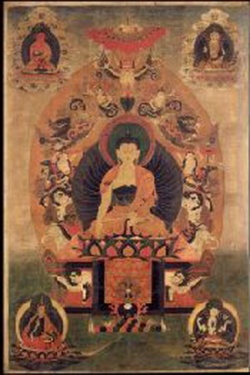The Power of Images in Buddhism
For Hindus, the answer to these questions would be relatively easy. In Hindu worship, the deity is called to become present in the image. You can say quite appropriately that when you worship an image of a god like Shiva or Vishnu, you are worshiping the god that is present in that image.
In the Buddhist case, the Buddha has achieved Nirvana and is no longer available. It is no longer present in that image. The image stands in a somewhat more complex relationship to the Buddha.
How does that relationship take place? It is understood historically that when the Buddha died, he left behind, in his relics and in the objects that he used, a certain power, a sustaining power. This power resides in that object in such a way that can make that object effective for you when you worship it. So, to pay homage to something like the Buddha’s begging ball allows you to plug into the lingering power of the Buddha’s presence. The Buddha himself may be gone, but there is a power that he has left behind which you can access by engaging in an act of worship.
What Do We Get From It?
You might ask one more question. In what sense do you touch the power of the Buddha? On one level it is physical power that is present. On another important level, for Buddhists specially, it is a power that grows out of your own response to that object. So, you might say that it is a meditative connection that you make, that reminds you of the Buddha’s presense.
All that is meant to describe the sophisticated vocabulary of Buddhist worship. You don’t just worship the Buddha in a particular Shrine, you get access to his power in a way that reminds you of the Dharma and helps you to embody it in your own experience.
